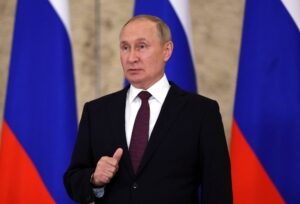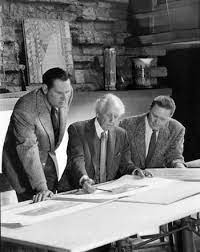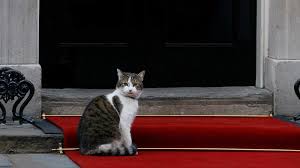
For the next two weeks, we are cruising the waters of Vietnam. Commencing in Ho Chi Minh City, we have just pulled out into the Saigon River as I write this continually changing blog. It is Tuesday just after seven am, four hours behind Sydney time, on a day when the Treasurer will empty his pot of gold or whatever over the Australian people. Past cranes, moored tramp steamers, the container barges, the tugboats, house boats and small craft, it is raining and for a working port, it is strangely silent. Clumps of water hyacinth, a skerrick of Mother Nature, defiantly float down the heavily industrialised river. We await the delivery of our breakfast. It is four hours to the sea.
Once Miss Saigon Now Don’t Miss Ho Chi Minh City
We landed in Ho Chi Minh City, which we all once knew as Saigon. Here in a city of about 10 million people, most seem to live on motor bikes and scooters. This is the inescapable impression one gets of this city as you drive from the airport. Gone are the days of wandering the city. My images are those of a man encased in a vehicle being driven hither and thither. The city I knew as Saigon shows little signs of what they call “The American War”. Our guide drives us past the War Remnants Museum where, we were told, the detritus of the War abandoned by the Americans as they retreated from Vietnam in 1975 is on show. To the people it is there to serve as a reminder; and it is in a distinct space away from the Military Museum, where the success of the Vietnamese people is remembered. Its forecourt is littered with planes, helicopters and tanks, mostly Russian. We did not go in.
My experience of the Vietnam War was examining those young men whose birthdays came up in the lottery, drafted if classified as medically fit. These young men were 19 years old; and now these ageing veterans are beset by the demons of having experienced war in a land that they hardly knew for a cause disgracefully misrepresented by the politicians of the time. I well remember the Federal election of 1966 when Harold Holt won in a landslide victory, interpreted then as a ringing endorsement of the War.

Unlike the Second World War, where Australia was threatened briefly with invasion, this was a War concocted by a few men, some of whom should have known better. It then descended into an obsession, a delusion, and the young people rebelled. After all, it was a war for the Americans to save face “by soundly defeating a third world country with third world socialist ideals with third rate communists like Ho Chi Minh and Võ Nguyên Giáp”. How so very wrong were these assumptions. Lyndon Johnson found that out when he poured over 500,000 troops into battle with over 58,000 casualties. Australia, his “all-the-way” fellow traveller, committed 60,000 army, naval and air force personnel for 521 deaths and over 3,000 wounded.
For what? I am no longer the young doctor who examined conscripts, but someone being driven around a bustling metropolis. We stop at the Presidential Palace where a North Vietnamese tank crashed through the gates on 30 April 1975 effectively ending the War. Now the grounds are a place for families to walk around, children to play, and there is only one small reminder when a uniformed man officiously challenged my wife while she was photographing, but did not prevent her from doing so, once reassured she was not trying to evade payment for entry into the grounds by crashing the gate. He nevertheless made her stand behind a mythical white line he had drawn with his finger.
Being a young doctor in the 1960s, the money for recruit examination came in handy as I was living on a meagre post-graduate scholarship and had a family. It gave me a perspective on the young men who had been called up. Only once was I confronted by a young man in beard and the uniform of the Woodstock set. He refused to be examined; I and a young fellow doctor whom I knew well were left as the night went on trying to induce him to be examined. A bloody martyr. Save us the histrionics, I thought at the time.
There was no way we were going to pass him, but we stupidly thought we could save him from being arrested if he would consent to be examined. We watched and he watched back. Eventually, the other young doctor calmly explained that eventually we could just leave him and then what may happen would be beyond our control; we were not infringing on his rights any more than any other doctor except that we could not explicitly say anything to him about what we found. While he was in this room he was totally under our control; we just had a job to do – and the word repeated several times struck a chord.
It did not take us long to find a reason for failure to pass his medical examination. He had the loudest machinery murmur that either of us had ever heard, indicative of a septal defect in the heart. The only further requirement for us then was to ascertain whether he was symptomatic, which he wasn’t. As this was going on, the defiant demeanour had given way to the fearful request asking if anything was wrong. We could only respond to by saying he should go and see his local doctor as soon as possible. He did not have a local doctor – “only the sick had doctors” – we shrugged and told him to get dressed and find a doctor anyway; that was all.
Given the buggery he had caused, which just meant we got home about eleven in the evening, we had a wry laugh about it. Reflecting on that episode now from a distance in time, it was just an example of bureaucratic anomie we had to tolerate to get and maintain our employment; and rationalise that there were three groups of examining doctors – one looking to fail and one with the zeal to pass them. The third group who were those encased in their pure objectivity. Of course, you knew in which group my friend and I lay.
All these memories came back as we were driven around this city, where the French influence is still evident in the wide boulevards lined with tall resin trees. The Notre Dame Cathedral Basilica is encased in scaffolding and is temporarily closed. Yet you see it is derivative from the Paris Cathedral of the same name, except that the Saigon version is built of Toulouse bricks, which have retained their bright red colour even after so many years. The French were here in Indochina from 1858 until 1954 when its army was crushed at the Battle of Dien Bien Phu, a defeat which should have alerted the Americans to the robust strategic combativeness of the North Vietnamese – and their courage.

Today is near the end of the rainy season, and while the hotel is ablaze with Singapore orchids and hydrangeas, the streets are beige and grey, there was frangipani in leaf but yet to flower. Shop fronts cluster – cafés, a motor bicycle repair shop, bánh mì outlets, craft shops. Then we drive into the street lined by the likes of Hermes, the flash Takashimaya and all the other suspects for the wealthy shopper.
We stayed at the Hyatt, an excellent hotel where the standard of Vietnamese cuisine raises the bar for their cousins in Australia. As I gaze around this spacious hotel with its people, obligingly going out their way to cater for me, I thought, how pointless the aptly renamed American War was. Unfortunately, there are those in power who cover their eyes and create memorials to those who so unnecessarily died or were so crippled not only physically but emotionally that they are the legacy for a fruitless war. Yet the raided bluster still goes on, even if the aim is the destruction of a War Memorial rather than Vietnam.
Medicare Lost
There are a number of elements in the Australian Health system which are both misunderstood and misrepresented. The 1946 Referendum granted the Federal Government the power of providing a financial benefit for medical, dental, pharmaceutical and hospital services. The benefit goes to the patient; it is not a fee charged by practitioner or institution. It is the amount of funding to be paid as a “benefit” to the patient for a particular item of medical service. A dental scheme has never been enacted.
In 1974, optometrists gained limited access to benefits on the grounds that they were deemed “medical”. It was a propitious time for that profession because of the number at that time who were members of parliament. It helps. The consequence of this generosity was the potential for this to cascade to every health professional being able to be deemed “medical”.
That has yet to happen, even though it is every central agency’s nightmare, given that Medicare is one of few expenditure line items not to be capped, although from afar, it is evident that capping is being undertaken by subterfuge. This generates its own problems for patients as the gaps between medical benefit and actual fee charged inevitably widens.
Finally, doctors are free to charge what they believe fair and reasonable. The Federal Government has no control over prices and incomes, last tested by the Referendum result at the end of 1973. The States do have the ability to fix prices, but in this day and age that would be politically suicidal – even if a Government tried to isolate one group of professionals.
When Medibank and Medicare were being brought into being, both Bill Hayden and Neil Blewett, as Ministers of the Crown were very knowledgeable and spoke the language of “health” fluently. So did Michael Wooldridge on the Coalition side later. All three were effective. From the commencement of my graduation in medicine at the end of 1963 to the present, there have been 22 Australian Health Ministers. Bill Hayden in fact was never Minister of Health, but as the Minister responsible for the introduction of Medibank, he may as well have been. Most of the others are in the same basket as is the current incumbent, Mark Butler. They neither speak “Health” nor know much about it. Thus, they are very susceptible to those influencers, whether these are in fact knowledgeable or not. Health has its fair share of the evangelical, the biased, the bigoted and the just plain stupid. Imagine you are standing in a marketplace where everybody is speaking a different language that you barely understand, but you are the newly appointed consul from Rome and everyone is speaking Arsacid Pahlavi.
All three mentioned above had very good bureaucratic backup; people knowledgeable and able to speak “Health.” The problem is that a Head of the Department over a 12 years’ reign who does not really understand her portfolio, save as being very good at keeping her Minister on side irrespective of party has been accompanied by the decline in the quality of health policy. This modus operandi essentially ensures that nothing of importance gets done; especially if you use the ruse of shuffling everybody every few months which is a recipe for destroying the corporate memory.
There are a number of bureaucrats who believe that bureaucratic management can be content free. The late John Paterson clearly believed this, but he was not alone. This theory does not work in health. Having been around longer than most in health policy and politics, I remember well the axiom that it takes 18 years for any reform to be sustained; and that is what has been lacking. John Deeble and Dick Scotton were working on the reform of medical financing from the mid 1960s, with important input into the influential Nimmo Inquiry in 1969. The culmination of their work was the passage of the Medicare legislation in 1983. That sounds about the expected time, and the scheme was successful. But over time, with the loss of these two especially, when dysfunctions in the ongoing implementation emerge, remedies are not found.
Corporate memory is shown to be in short supply. Since Medicare from the start provided the right balance between government funder, health provider and patient, it nevertheless was susceptible to gaming. First there were the State governments who, once the Federal Government allowed them access to Medicare payments, privatised a substantial amount of their services or, in the case of Victoria, just diverted health payments to other parts of the State budget. So, the first impediments were rogue State governments compounded by a weak Federal response.
The second element in maintaining stability which was very important were the periodic Inquiries into the Fees Schedule between the AMA and Government, the last being in 1984. The value of these Inquiries was that they made both sides produce data, however imperfect, instead of opinion. As such, these data could be examined objectively and a negotiated position agreed. After these Inquiries finished, which were essentially exercises in cost accounting, the consultancy which Robert Wilson and I were involved in looked at in depth into several of these exercises, quasi-inquiries between government and specific segments of the medical profession. There is no doubt that the Fees Inquiries were not conducted with the level of complexity now required in costing medical services and practice arrangements.
However, it is fair to say that costing radiation oncology practice in the 1980s approached this level of complexity. There were a number of lessons which still can be learned from this exercise. The first was that when the professional relativities were being developed, most of the radiation oncologists were employed in the public sector. Hence the only reference point to Medicare benefits was the salary they earned from the particular State-run facility.
The technical staff were salaried – the radiographers, the scientists and all the others essential for treatment. Capital expenditures by States was on machines – when funds were available new equipment would be purchased – with no thought given to amortising the cost of these facilities. At the same time technology was improving with development of linear accelerators, the most commonly used treatment machines, and there were calls for such machines to be funded.
Essentially then we had to construct a cost effective model, taking into account all of the above three elements for private radiation oncology practice, which we did in association with the Federal Department of Health, involving delineation of the professional, technical and capital components. Along the way, we determined that three linear accelerators were the most efficient deployment of facilities. There were subsequently a number of Inquiries into Radiation Oncology trying to disprove our findings. Eventually politics triumphed – single treatment machine facilities were installed with all the staffing problems that entailed and the Federal government allowed the States to have access to the capital component despite the costings being based on private facilities. This decision has bedevilled the health system ever since; not only States privatising but also “double-dipping”.
The other change has been the extensive corporatisation of medical practice with both Australian and in recent years international finance company owners, and since the sustainability of the business model is profit not patient outcome, then the gaming of Medicare items becomes an essential component underpinning such a model. Nothing has been done to change this effect on Medicare. As a consequence further Medicare funding is repatriated overseas.
Finally, there are the doctors themselves. Even among the medical profession before corporatisation, some had already embarked on determining the best methodology to game the system. Medical practice loses its credibility if the objectives are all financial. With seemingly endless differentiation of the specialties and the chopping and changing of item descriptors, the number of items expand and their descriptors have expanded. With volume comes complexity, and therefore some doctors have been known to employ people specifically to work out the optimal profitability by manipulating the value of various items of service, whilst maintaining the broad lines which the Health Department has established, such as for general practitioners the 80/20 rules (seeing more than 80 patients for 20 or more billing days a year) and more recently a similar rule for consultant physicians and paediatricians in relation to telehealth.
Extravagant lifestyle becomes one driver to charge well beyond the benefit. If there were regular Inquiries, it could focus everybody’s need to have an affordable health system. If the proceduralists have good results, then the patient is inclined to accept the cost. I suspect that is why some ophthalmologists are able to charge exorbitant fees – cataract removal and lens implant gives back eyesight, in skilled hands it is swift, with little fear of complication. Moreover, we only have two eyes so there is a limit on the number able to be done on the one person! Personal willingness to pay a premium has always been an important vector. For most ophthalmologists, attention to the items of service remains an important vector for profitable gaming if one believes the recent claim that injection for macular degeneration is being overused; and here there may be more than two bites at the cherry. This illustrates how narrow is the walkway between gaming and outright fraud.
Item descriptors are the basis of relativity, the different value of one specialty against the another. The relativities were set in the early 1970s when each of the then specialties was asked to value its professional expertise, but over time, changes in medical practice should have been factored into medical practice and altered these relativities. The benefit when conceived was set based on the professional component. It assumed the cost of the technical component would be paid by the hospital or facility where the operation takes place, which led in the 1980s to recognition of stand-alone day surgery centres. The problem of capital expenditure in terms of prostheses has never been satisfactorily sorted out, and if it is not absorbed into a global benefit for a particular item of service, it will continue in a limbo state of chaos.
Now that the Government intends to place consulting firms on a strict diet, the Department should beef up its expertise in medical knowledge and cost accounting by constructing a long term Medicare Branch directly responsible to the Minister, based on the model Robert Wilson and I conceived which was successful and transparent until the content-free big consulting firms took over.
The areas to be examined should expect the AMA to develop a similar expertise and be less concerned with vapid reactive media releases. However, it also needs to be recognised that with greater complexity in medicine one organisation can no longer claim expertise across the entire medical spectrum and therefore this process inevitably involves the assistance of specialist organisations.
Then the effects of the following can be objectively examined
(a) gaming, and when gaming becomes fraud
(b) corporatisation
(c) States accessing Medicare
(d) the structure of items and their descriptors to incorporate the three components
(e) the future of relativities
(f) the re-institution of regular Health Department – AMA Inquiries
I have also not included so-called aesthetic surgery – lifestyle masquerading as health. It requires a separate line item.
As an addendum, some may say that the recent MBS Review carried out some of these tasks and, with its latest hand-picked committee, it will deal with the relevant issues. However, I don’t see all the above issues on its agenda. The MBS Review was a massive undertaking that had many critics, especially in relation to the perception of hand-picked participants and pre-conceived outcomes.
The recent media attention on a PhD about the use of Medicare items and perceptions of overuse adds another dimension. I have yet to read the 400 or so pages of the thesis, but there is clearly disagreement about what conclusions were actually reached and their accuracy; the mainstream media, as always, does its bit of headline grabbing without too much concern for the nuance. Unhelpful when the rot is widespread and entrenched.
The Throwback
Just a thought about the antics of Vladimir Putin when I heard that many of the young educated, the basis of a middle class which Russia has always found difficult to maintain, have left the country. They are those who have the funds to do it, and in a country which is essentially socially corrupt, “who you know” is paramount to achieving one’s goal.
The fool Yeltsin, who facilitated the transition of Russia to a kleptocracy enabled a large number of the financially adept without any apparent morality to carve Russian resources up into fabulously wealthy satraps. Putin’s rise from being an obscure KGB agent showed the value of contacts, in fact becoming a form of padrone, and then realising the fallibility and foibles of Yeltsin, he nestled like a cuckoo, not making himself a large target in order to be underestimated by potential rivals as he threw them out of the nest.
Putin was a shrewd, intelligent man, who yet has always carried a mystical belief in Mother Russia. Whether Putin was religious or not, he recognised that in post-Communist Russia, the Russian Orthodox Church could be an ally. After all, while the Church looms large within the framework of Orthodoxy, Moscow is not numbered among the original five Patriarchies.

Feelings of inferiority drive most political behaviour and Putin is no different. The Russian Soviet Empire in which he was born had been stripped of its Asian states and most of its European hegemony. The disdain of the freed Baltic states would have infuriated him. Khrushchev, having ceded Crimea to the Ukrainian Soviet in a fit of pique, meant Crimea also need to be recovered in this post-Soviet world.
Putin still had influence in two satellite European countries – Belarus and Ukraine. Elsewhere in the Caucasus and in its former Asian empire, it has been able to ensure that what Russia determines, these states will obey, and he showed what happens with disobedience when he defeated any Georgian aspirations in 2008 and carved pieces off the country to reinforce the point.
Putin repeated the process in Ukraine by occupying the Russian speaking border areas and carrying out a bloodless annexation of Crimea, in so doing humiliating Ukraine, sending elements of the Ukrainian navy based in Sebastopol packing, as Russia assumed control of the Black Sea naval base.
Now it is a different Ukraine, Putin’s corrupt Ukrainian marionettes having been banished by a young man – Zelensky, a true knight errant. And Ukraine has significant resources and a population of over 44 million people (cf Georgia 10 million).
Putin came to office over 30 years ago with all the novelty of youth unknown; now at 70 and over 30 years later, he exists in his braggadocio shell, which threatens and threatens. The problem is that his oligarch mates have not devised the business model for a nuclear war outcome by which they can loot without having to worry about radioactive caviar and vodka laced with just a tincture of polonium. After all, the latter has been favoured Putin method of eliminating his individual adversaries.
Toilets all at Sea

I recall the anecdote about Frank Lloyd Wright who once said to his son-in-law, Winston Peters; “Wes, sit down will you. You are ruining the scale of my architecture.” Frank Lloyd Wright was a small man, and Wes had been helping in the construction of this extraordinary house, Fallingwater, built over a creek. Whenever anybody mentions Wright’s name, Fallingwater is the first of his many buildings that people associate with him. Fallingwater is located at Bear Run near Pittsburgh in Pennsylvania.

I remember shaking Winston Peters’ hand, when we were serendipitously at Taliesin West in Scottsdale, Arizona at the same time as he was. Given that Wright built homes from the perspective of his short stature, with many of the low ceilings his houses could be described as “snug”. Winston Peters was lean and rangy. I was struck by his quiet manner and in the “old money” he was nearly six foot five inches tall. Wright was feisty. Peters was not, and he would have done what he was told and sat down.
The reason that I thought of that exchange is that it is probably best not to have airlines run by the vertically challenged. I have not travelled by air for some time, but my level of disability is gradually increasing, the price of increasing age. However, in the airplane toilets, you cannot swing a leprechaun – and manoeuvring in such a confined space, where I suspect that the partial pressure of oxygen is much compromised, I have great difficulty using a facility the size of a small wardrobe. The senior airline executives may find cleaning their backsides in an airline toilet a breeze. I do not. For the disabled of normal size in such a confined space, especially with doors that may open out on a very narrow passage space trying to orient oneself when using canes or crutches is a learned art. This problem has been aired recently in an international travel magazine by a wheelchair bound person who now, when about to travel on a plane, prepares by eating and drinking little in the 24 hours before the flight. Probably resembles the preparation regimen before a colonoscopy.
The danger of deprivation is dehydration, since the plane’s atmosphere desiccates the traveller, and therefore depriving oneself of fluids prior to flying is not very desirable. I just use a container discreetly, and my carer empties it. You must be able to adjust yourself and take your time; and have a very understanding carer.
There are rules about toilets depending on whether the plane has a single or double aisle; and all planes with a seating capacity of over 60 passengers are required to have a toilet. In these smaller planes, the level of difficulty is compounded; and I have been in some embarrassing positions in a Dash-8, where there is no water to wash your hands, and when the door is open, it blocks access to the cockpit and the toilet itself is constructed for a midget – and a small one at that.

I have been on long flights in small planes without toilets and have coped. Nevertheless, the convention of providing any receptacle requires knowing what it is like trying to empty your bladder when the plane is caught in even light turbulence. I am sure I am not the only one to have difficulties; but it is a topic which, like many in the shadows of disability, is not discussed very much – a taboo particularly in the board rooms of small people.
Mouse Whisper
A twitter more about men than mice.
A brilliant Merrie England twittertwist:
My son has lived through five chancellors, four home secretaries, three prime ministers and two monarchs. He’s four months old.

